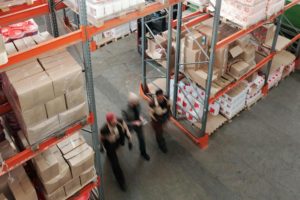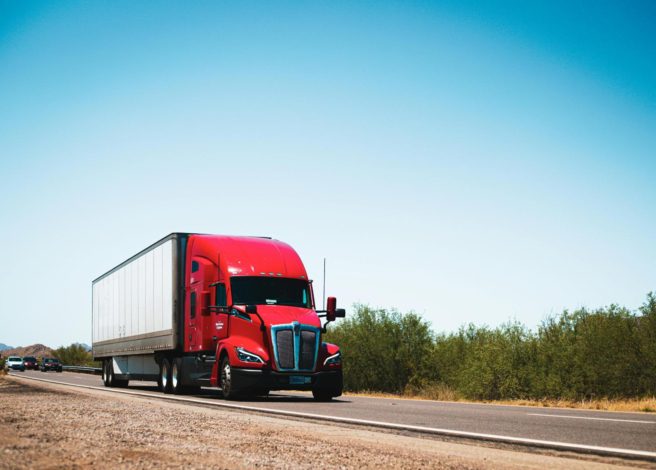At a Glance
- Direct purchasing from a manufacturer and buying through distribution models each have unique strengths — direct buying offers lower per-unit costs for large, consistent orders, while distributors provide flexibility, storage space, smaller order quantities, “just-in-time” delivery, safety stock, and broader product variety.
- Total cost matters more than unit price; storage, labor, and inventory management can erase “savings” from direct purchasing.
- Distributors often respond faster to urgent or complex orders, whereas manufacturers may have longer lead times.
- A hybrid approach can maximize efficiency.
Your premium restaurant chain is expanding rapidly. Orders are pouring in faster than you anticipated, and that’s so exciting! Now, you have a key decision to make that could change your supply chain. Should you buy plastic food packaging from the manufacturer, or stick with your distributor?
Before today, you thought the toughest decision you had to make was which kind of fancy European mustard to use. Yet here you are at a massive crossroads. This choice affects everything from your bottom line to your ability to meet customer demand. Make the wrong decision, and you might pay high prices for rush orders. You could also face storage issues or, even worse, run out of packaging during your busiest season. And that is something you certainly don’t want, especially after taking a look at those mustard prices!
With more than 50 years in the plastic packaging industry, we’ve seen many businesses reach this place. Successful companies know a key truth: There’s no single “right” answer. However, there is a solution for your unique situation.
This article covers key differences between direct purchasing from a manufacturer and distributor relationships. You’ll discover hidden costs that can surprise you, mistakes that derail purchasing plans, and strategies to keep your shelves stocked and customers happy.
A Tale of Two Procurement Paths: Why Can’t I Just Buy Packaging from the Company That Makes It?
 Understanding your packaging procurement options starts with recognizing that each path serves different business needs.
Understanding your packaging procurement options starts with recognizing that each path serves different business needs.
Is Buying Direct Best for Your Business?
Buying directly from manufacturers operates like a highway built for eighteen-wheelers. It’s designed for a high volume of predictable traffic that knows exactly where it’s going.
Purchasing directly from a manufacturer shines when your business orders large quantities of packaging consistently. Think truckload quantities delivered multiple times weekly or biweekly. Large grocery chains, steady processors, and national retailers often see this option as the most efficient.
The appeal is simple: You’re dealing directly with the source, which typically means better per-piece pricing and direct communication. When you need a million pieces of the same container each year, cutting out the middleman makes sense.
But this highway comes with strict entry requirements. Direct purchasing requires warehouse space, the ability to manage full truckload deliveries, and accurate forecasting. Simply put: You need a place to store your packaging and a strong handle on how much you’ll need at any given time.
Any over- or under-orders are your responsibility. Let’s say you ordered 100 cases but really needed 150. You can’t just call the manufacturer for the missing 50 because partial truckloads raise costs significantly and you want to stay away from that. You’d have to place a new full-truckload order and find space for the extra product that comes with it. A distributor, on the other hand, could get you those 50 cases and items from other product categories at the same time with no fuss.
The Distributor Network: Your Supply Chain Multi-Tool
Distributors act like local roads. They provide flexibility, easy access, and meet a wide range of needs well. They excel at handling complexity that would overwhelm a direct relationship and have first-hand experience — their value is priceless.
Imagine this: your bakery (for fun, let’s call it “Flour Power”) needs food containers, plus gloves, paper towels, cleaning supplies, and seasonal packaging sizes. A distributor maintains relationships with dozens of manufacturers, creating a one-stop shop for everything you need.
The distributor model especially benefits businesses that need smaller, more frequent quantities across different categories. They also carry safety stock — extra inventory that helps you avoid shortages when demand spikes. And if your local distribution center runs low, they may shift stock from another warehouse to meet your deadline.
In short: Distributors give you access to variety, flexibility, and backup supply — things that can be tough to manage on your own.
The Hidden Economics of Each Model
While unit pricing gets most of the attention, the real financial impact lies in the details most businesses overlook. That’s right. We need to get into the nitty-gritty here.
Direct Purchasing Economics
 Direct purchasing from a manufacturer usually has the lowest cost per unit. But the true cost includes storage fees, equipment, inventory systems, and money tied up in stock. When all of these are added together, that’s the company’s total cost — not just the sticker price per unit.
Direct purchasing from a manufacturer usually has the lowest cost per unit. But the true cost includes storage fees, equipment, inventory systems, and money tied up in stock. When all of these are added together, that’s the company’s total cost — not just the sticker price per unit.
Let’s say a hypothetical processor (again, we’re having fun and let’s call it “Fork It Over”) switches to direct purchasing from a manufacturer to save 8% per unit. Without enough space, they rent a warehouse, hire staff, and buy equipment. Those savings disappear faster than free samples at a food show.
Direct purchasing also demands sharp forecasting. Too little, and you face delays. Too much, and you pay to store product you can’t use right away.
And remember: Manufacturers sell packaging, not everything else you need to run your business. Gloves, cleaning supplies, and other essentials must be purchased separately. More details on that to come.
Distributor Relationship Economics
Distributors add a markup — but that fee covers storage, inventory management, smaller orders, and customer support. For most businesses, these services would cost more to handle in-house.
Distributors also reduce risk. They can often adjust when your demand forecast is off, and they have flexibility to move outdated products through their network. Extended payment terms (30–90 days after delivery) also improve cash flow, letting you sell products before you pay for the packaging.
Speed and Flexibility: The Responsive Supply Chain
 Fast turnaround requirements favor distributors in most scenarios. You need those containers for your Christmas chili (bravo to you for thinking outside the box there) fast? Working with a distributor is the way to go.
Fast turnaround requirements favor distributors in most scenarios. You need those containers for your Christmas chili (bravo to you for thinking outside the box there) fast? Working with a distributor is the way to go.
Distributors hold inventory to address urgent needs, like your chili quickly. In contrast, manufacturers often work with longer lead times (the amount of time it takes to receive your product after placing an order) due to their production schedules.
Distributors also shine at handling complexity. A single order with three container sizes, two lid types, and gloves can be combined into one shipment. With direct purchasing, you’d juggle multiple manufacturers to pull that off.
Choosing Your Procurement Strategy: Is Direct or Distribution Best?
Direct Purchasing Works Best When You:
- Order a significant amount of packaging on a consistent weekly or biweekly basis
- Have adequate warehouse space and material handling capabilities
- Maintain predictable demand patterns with accurate forecasting
- Can manage inventory levels effectively
Distributors Serve You Better When You:
- Need multiple product types from various manufacturers
- Lack storage space or handling capabilities
- Experience seasonal demand fluctuations
- Require frequent, smaller deliveries
- Value supply chain flexibility over per-unit cost savings
The Critical Mistakes That Cost Money
The Price-Only Trap
The biggest mistake is only looking at per-unit pricing. This ignores the total cost of ownership. Let’s say a business recently switched to direct purchasing based solely on an 8% price reduction on their packaging.
In six months, they will uncover hidden costs such as:
- Warehouse rental
- Warehouse labor (including overtime)
- Warehouse supplies (for things like cleaning)
- Inventory and logistics software
- Operational labor (inventory managers, logistics coordinators)
- Working capital locked in excess stock
- Equipment rental (or purchasing) for machines like forklifts
- Shipping costs
Their 8% “savings” may actually turn into a 3% cost increase.
The Forecasting Fantasy
Businesses often overestimate forecasting accuracy. If demand drops after you order direct, you’re stuck paying to store or return excess inventory — along with the headache that comes with it. So always consider the benefits of distribution before making any final decisions.
The Hybrid Approach
Many businesses mix both paths. Large, steady orders may come directly from the manufacturer, while seasonal items, product trials, and emergency needs flow through distributors.
Delivering Your Decision
Start by analyzing your situation across these dimensions:
- Volume: What do you order consistently in large amounts?
- Infrastructure: Do you have space and systems to store and manage truckloads?
- Demand: Is your ordering predictable or variable?
- Total cost: Have you factored in storage, labor, and handling — not just unit price?
The most successful businesses treat procurement as a strategic capability, not just a cost center. They understand that the cheapest option per unit isn’t always the most profitable choice overall.
Whether you choose purchasing directly from a manufacturer, distributor partnerships, or a hybrid approach, the secret sauce isn’t in the strategy itself — it’s in picking the one that actually fits your business. After all, the best procurement plan is the one that works in your real world, not someone else’s spreadsheet.
Interested in gaining additional knowledge about the industry? Visit Inline Plastics’ Learning Center today and explore a wide range of topics.


